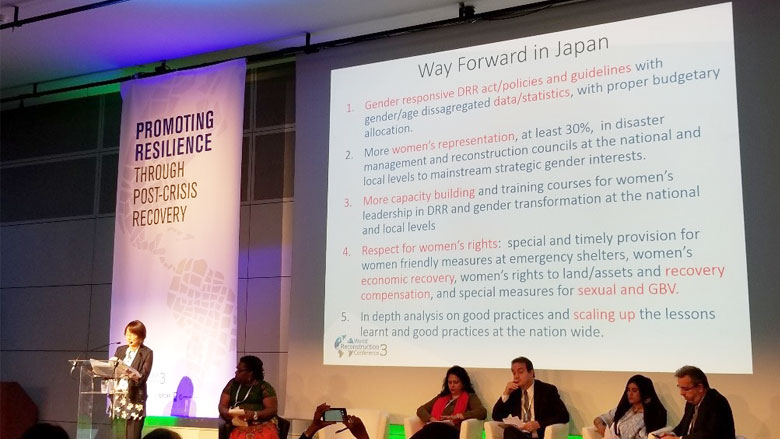More than 800 participants from civil society, national and local governments, academia, the private sector and international organizations from around the world gathered in Brussels from 6-8 June 2017 for the Third Edition of the World Reconstruction Conference (WRC3) in Brussels, Belgium. The Japanese delegation played a central role in this conference, headlining several sessions to discuss and share lessons learned from the country’s extensive experience in disaster recovery as well as best practices captured by Knowledge Programs of the World Bank Disaster Risk Management Hub, Tokyo.
Co-organized by the Global Facility for Disaster Reduction and Recovery (GFDRR), the European Union, the United Nations Development Programme, and the African, Caribbean and Pacific Group of States, the conference sought to promote resilience through post-crisis recovery.
Priority 4 of the 2015 Sendai Framework for Disaster Risk Reduction states as a goal to “build back better in recovery, rehabilitation and reconstruction,”[1] which reflects the strong advocacy efforts undertaken by the World Bank Group, Japan International Cooperation Agency (JICA), United Nations Development Programme, European Union and other partners to ensure longer-term disaster resilience. Build Back Better (BBB) provides an important premise for engagement of all national governments, UN system and multilateral agencies to implement recovery in a transformative manner that reduces risks and builds resilience in an increasingly complex world of multiple and colliding risks.
The Japanese delegation contributed insights and lessons learned from their extensive and diverse experience of disaster recovery to more than 800 experts and practitioners who attended WRC3


